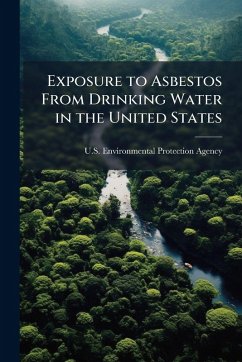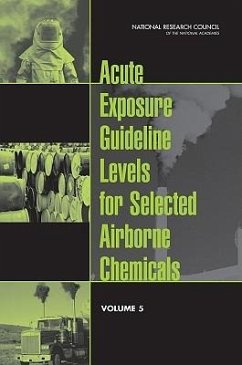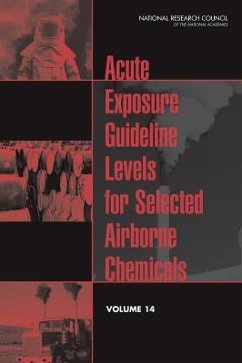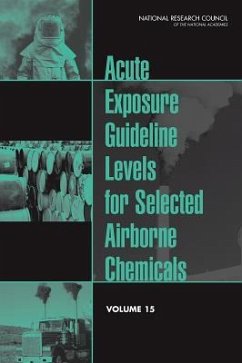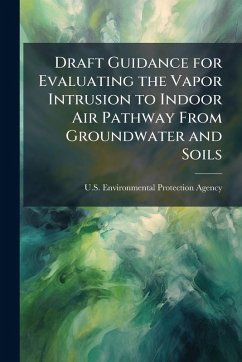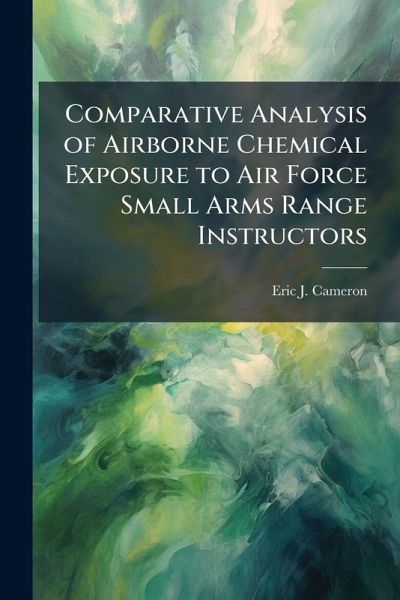
Comparative Analysis of Airborne Chemical Exposure to Air Force Small Arms Range Instructors
Versandkostenfrei!
Versandfertig in über 4 Wochen
18,99 €
inkl. MwSt.
Weitere Ausgaben:

PAYBACK Punkte
9 °P sammeln!
Significant concentrations of lead can be generated at indoor and outdoor firing ranges during firing operations using conventional leaded ammunition. In an effort to eliminate the potential risk of lead exposure, the Air Force is transitioning to a lead-free alternative to the leaded bullet. This study examines airborne chemical exposure to Air Force small arms range instructors during M16 firing of lead and lead-free bullets. Historical range information collected from 63 active duty Air Force bases identified that two thirds of the Air Force military ranges within the Continental United Sta...
Significant concentrations of lead can be generated at indoor and outdoor firing ranges during firing operations using conventional leaded ammunition. In an effort to eliminate the potential risk of lead exposure, the Air Force is transitioning to a lead-free alternative to the leaded bullet. This study examines airborne chemical exposure to Air Force small arms range instructors during M16 firing of lead and lead-free bullets. Historical range information collected from 63 active duty Air Force bases identified that two thirds of the Air Force military ranges within the Continental United States are currently firing lead-free ammunition. Over 420 air sampling results were compiled and statistically analyzed to determine the average representative airborne exposures during firing of leaded ammunition at indoor and outdoor firing ranges. Highest average 8-hr TWA exposures for lead were 17% of the Occupational Exposure Limit (OEL). Task exposures, representing worst case conditions, were found to be 1.2 time the OEL. Two indoor and four outdoor firing ranges currently firing frangible lead-free ammunition were evaluated through a collaborative effort with the Air Force Institute for Operational Health (AFIOH) to assess instructor exposure and current range conditions. Transition to lead-free ammunition showed a 70% reduction in lead at indoor ranges and a 41% reduction in lead at outdoor ranges. Airborne exposures generated from metals and combustion by-products associated with nylon and plastics during M16 firing of frangible lead-free ammunition were found to be well below their respective OELs. This research suggests that the exposure levels associated with lead-free ammunition does not pose a significant threat to Air Force instructors at indoor and outdoor ranges. This work has been selected by scholars as being culturally important, and is part of the knowledge base of civilization as we know it. This work was reproduced from the original artifact, and remains as true to the original work as possible. Therefore, you will see the original copyright references, library stamps (as most of these works have been housed in our most important libraries around the world), and other notations in the work. This work is in the public domain in the United States of America, and possibly other nations. Within the United States, you may freely copy and distribute this work, as no entity (individual or corporate) has a copyright on the body of the work. As a reproduction of a historical artifact, this work may contain missing or blurred pages, poor pictures, errant marks, etc. Scholars believe, and we concur, that this work is important enough to be preserved, reproduced, and made generally available to the public. We appreciate your support of the preservation process, and thank you for being an important part of keeping this knowledge alive and relevant.



